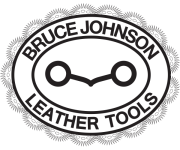Leather Working Tutorials
On this page I share with you some detailed guides on how to use specific tools in my written tutorials. Each tutorial is available to read here and in a downloadable PDF format.
Tutorial: Using A Push Beveler
Push Bevelers are a handled tool used for the beveling of swivel knife cut lines. Used for long straight lines, the tool is pushed along the cut line to make a similar effect as using a beveling stamp.
Tutorial: Choosing A Hand Held Strap Cutter
There are a few choices in styles of strap cutters. This guide will help show examples and the advantages and disadvantages of wooden strap cutters, draw gauges, and plough gauges.
Tutorial: Using A Draw Gauge
Draw gauges are one of the most common strap cutters, and with this tutorial I explain some tips for choosing a draw gauge, blades, gripping and using one along with some safety tips.
Tutorial: Choosing a Benchtop Leather Splitter
The first question to answer is what types of leather can be easily split with a bench top splitter. The leather needs some body. Vegetable tanned leather, latigo, English bridle leather, harness leather and tempered rawhide all will split well.
Tutorial: Osborne #86 Leather Splitter
The Osborne #86 leather splitter is designed to be mounted on the edge of a workbench with the adjusting thumbscrew hanging over the edge. Some people mount them on a bock of lumber like a 2x6 and then clamp the board to the bench
Tutorial: Chase Splitter Instructions and Tips
Chase splitters are one of the more forgiving splitter types and have several adjustments. They look different than many other types of splitters, but are one of the most reliable styles. Rollers feed leather squarely into the blade.
Tutorial: Using Rein Rounders
Rein rounders are used to make a rounded cross section profile in leather. Some common applications are handles, dog collars and leashes, horse tack, and leather belting for machinery. The rounders themselves may be either bench mount to be screwed to the benchtop or vise mount to be held in a vise.
Tutorial: Using French Edgers
French edgers are used to skive, thin or bevel edges, cut a mitered corner, cut a channel or trim in some areas. They also come in two profiles viewed from the side – flat or with a slight curve or “sweep”. Then to further confuse things, a few makers had them with a round bottom French edger that cut a rounded profile.
Tutorial: Edge Beveler Sharpening
Edge Beveler sharpening is one of the most common questions I field. Basically edge bevelers cut the sharp corners off the edges of leather pieces. They need to be sharp to cut. While sharpening isn’t rocket science, there are several considerations because of the different styles and profiles of edge bevelers.
